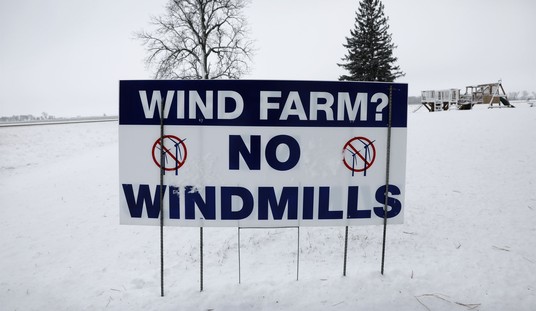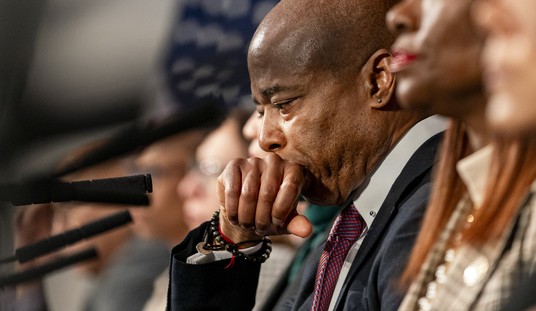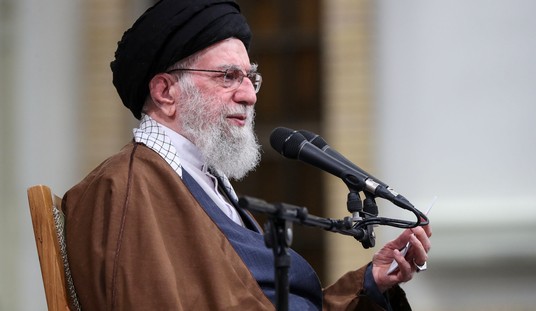Americans can’t fully get back to normal in this coronavirus pandemic until researchers not just find a vaccine but also confirm its effectiveness and mass-produce it. Can that be done in the twelve-to-eighteen-month timeline cited by government and the pharmaceutical industry? ABC News throws some cold water on that projection, with one expert warning it’s “probably not going to happen”:
Although it likely will take more than a year before a vaccine is ready for the public, Fauci also said COVID-19 vaccine development is on track to be “literally the fastest that we have ever done.”
With more people being infected and lockdown orders creating immense financial burdens with so many not allowed to work, the question becomes even more pressing: Is there a viable vaccine in sight?
Dr. Maria Elena Bottazzi, co-director of the Texas Children’s Hospital Center for Vaccine Development, believes a previously stated 12- to 18-month timeline may be too optimistic.
“My concern is that people are hearing we are going to see things in a year or 18 months,” Bottazzi told ABC News. “The reality is: That’s probably not going to happen. We may have some real optimism and some safety evidence by then, but not a vaccine.”
“There’s a long road after safety — you still have to do a lot of things before you can confirm the efficacy and give this to the public en masse,” Bottazzi added. “That’s the hard message. It’s not just a 30- or 40-people trial to lead us to a solution.”
It won’t be for lack of trying. ABC went to USAMRID to get a sense of their progress, and their researchers are working around the clock to find a formula to stop the coronavirus:
The pessimistic appraisal stands in stark contrast to other messaging from the Trump administration and from the pharmaceutical industry itself. Human trials on at least one vaccine candidate have already begun, and Johnson & Johnson announced this week that their billion-dollar effort will have its trials in September, through their Janssen unit working on the problem now.
One way this might go faster — and get around Bottazzi’s concerns — is that manufacturers could start mass production ahead of larger-scale trials and final approval. That would be quite a risk, but that appears to be the plan:
The Janssen vaccine clinical trials are expected to begin “no later than” this fall, according to the HHS announcement, which also said the goal is to get a COVID-19 vaccine ready for emergency use in the U.S. in early 2021.
Meanwhile, the company will begin preparation for large-scale vaccine production Wednesday, Janssen spokeswoman Katie Buckley wrote in an email. The company would be able to make 600 million vaccine doses by the end of 2020, with 300 million manufactured in the U.S., she wrote. “We are however investing in new production facilities to increase that number.”
If Janssen’s vaccine is proven safe and effective, the company will also make it available “in China and other parts of the world,” said a statement by Paul Stoffels, chief scientific officer at Johnson & Johnson.
Moderna’s early vaccine trials are already underway with help from the National Institutes of Health. BARDA will support phase 2 and 3 clinical trials, which typically involve hundreds or thousands of patients.
“Given the pandemic, Moderna has already started to prepare for the rapid acceleration of its manufacturing capabilities that could allow for the future manufacture of millions of doses should mRNA-1273 prove to be safe and of expected benefit,” the company said in a statement. “Moderna is engaged in discussions for outside funding, including with BARDA, of such activities and will continue to work with government, industry and other third parties to responsibly and rapidly move forward.”
The risk here is that a rejection by the FDA would mean billions of dollars in product would become useless. Congress and the Trump administration could solve that problem — and may already have — by indemnifying manufacturers against the losses. That would be similar to wartime production of new weapons systems and aircraft; in World War II, the military paid for a lot of systems on spec that never saw a single battle. They needed to keep the defense industry alive in order to innovate, and they needed innovation to overcome the initial technological advantage our enemies had. Few complained after the war that it had been too costly (with the exception of politicians who singled out Howard Hughes over it).
It’s a costly policy for taxpayers and arguably incentivizes recklessness in R&D, but these are not normal times. The US and the world need a vaccine ready to roll out as soon as it gets approval, not six months down the road. If putting production in parallel to final trials and approval saves us that much time, the cost of eating hundreds of millions of ineffective formulations will seem very much like a great investment.
Just how desperate are scientists to find a widely distributed vaccine quickly? Perhaps desperate enough to work with these companies:
British American Tobacco, the maker of brands including Lucky Strike, Dunhill, Rothmans and Benson & Hedges, has said it has a potential coronavirus vaccine in development using tobacco plants.
BAT has turned the vast resources usually focused on creating products that pose health risks to millions of smokers worldwide to battling the global pandemic.
“If testing goes well, BAT is hopeful that, with the right partners and support from government agencies, between 1m and 3m doses of the vaccine could be manufactured per week, beginning in June,” the company said. …
“Tobacco plants offer the potential for faster and safer vaccine development compared with conventional methods,” the company said.
BAT said its US biotech subsidiary, Kentucky BioProcessing (KBP), has moved to pre-clinical testing and that it will work on the vaccine on a not-for-profit basis.
As they used to say in the other Great Wars … smoke ’em if you got ’em. This all-hands-on-deck has yet to be tried, so we don’t know whether it can produce a vaccine within a 12-to-18-month timeline. Let’s not assume it will work, but let’s also assume that the normal rules for predicting a timeline don’t necessarily apply here, too.








Join the conversation as a VIP Member